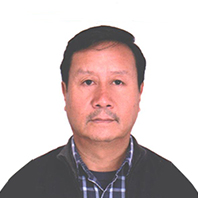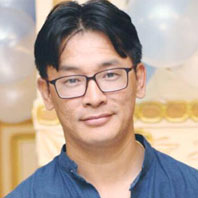
Manaslu Sanctuary and the Hidden Valley Trek
Mt. Manaslu that lies at the elevation of 8156M and world’s eighth highest mountains was first climbed by the Japanese Expedition team in 1956. Manaslu Sanctuary is a 11 days program that we have developed very recently keeping in mind to those people who have very short holiday period and also for the family and elderly groups. Despite the time constraint, this trek offers 360° view of the high snow capped mountains from the Manaslu Base Camp (BC), crosses through beautiful villages and colorful rhododendron forest (in Spring). However, this BC is not the regular one that meets on the classic Manaslu Round trek, this is the BC of the North-West face of the Manaslu. Another highlight of this trip is the Pungkar lake in Bhimthang, beautiful village at the lap of Manaslu.
Trip Highlights
- The diversity of the landscapes of the Manaslu, massive little frequented.
- 360° view of the high snow capped mountains.
- Beautiful villages, experience local culture, colorful rhododendron forest and turquoise color lake - Pungkar Lake.
Detailed Itinerary
Day 1: Arrival in Kathmandu
Depending on your arrival time, our representative will be at the airport to receive you and transfer you to your booked hotel.Overnight in Hotel
Meals: B
Day 2: Drive to Tal (1700m) – 8/9 Hrs Drive
An early morning breakfast and we head towards Tal through the paved road from Kathmandu until Besi Sahar. At Besi Sahar, we change the vehicle and continue off road drive to Tal village, where we spend an overnight.Overnight in Lodge
Meals: BLD
Day 3: Trek to Tilje (2300m) – 7 Hrs Trek
We will walk along the Marshyangdi river, reach Khotro village (1842m) after 2 hours walk. From here, we start ascending on concrete stairs to arrive the beautiful village of Nache (2200m). Nache is a Gurung village with around 40 household. People here grow potatoes, wheat and barley. After Nache, we cross suspension bridge (130m long), cross pine forest to meet the main road. We continue walking for another 15 minutes from the main road and cross another small suspension bridge to arrive at Tilje.Overnight in Lodge
Meals: BLD
Day 4: Trek to Yak Kharka (3020m) – 6 Hrs Trek
Today, we start our trek after leisurely breakfast. The first village on the way to Yak Kharka is Gowa, a Gurung village. We take some time to enjoy the beauty of this beautiful village. We will spend one night in Gowa on our way back. We continue our walk and stop at Suti Khola for the lunch. After lunch, we cross a small bridge and walk for another 3 hours to reach Yak Kharka. There is only one lodge in Yak Kharka, situated at the heart of the rhododendron forest.Overnight in Lodge
Meals: BLD
Day 5: Trek to Manaslu Bc (3540m), Back to Yak Kharka – 6 Hrs Trek
We walk on the trail that passes through the forest of pine, rhododendron and other trees. After one hour walk we leave the trail that goes to Bhimthang and head towards the direction of the river. After crossing this river, we climb progressively along the Purdi river for another 2 hours to reach the Manaslu BC. We will have pack lunch here, enjoying the 360° view of the mountains like Phungi Himal (6538m), Peak 29 (7871m), Manaslu North-West face and other mountains. We return back to Yak Kharka for overnight stay.Overnight in Lodge
Meals: BLD
Day 6: Trek to Bhimthang (3590m) – 5 Hrs Trek
Today, we follow the same trail as yesterday but continue towards Bhimthang. Like yesterday, the trail passes through the dense forest of rhododendron. During the spring season, the forest is very vibrant and colorful. Bhimthang is a small beautiful village with very few households including the lodges at the lap of Manaslu. From Bhimthang, you have a very good view of the mountains like Lamjung, Manaslu (North East Face), Phungi Himal (South Face), Himlung (North West Face), Cheo Himal and other mountains. Afternoon, we explore the nearby areas of this beautiful village. We will spend two nights here.Overnight in Lodge
Meals: BLD
Day 7: Trek to Pungkar Lake (3965m), Back to Bhimthang - 5 Hrs Trek
After having leisurely breakfast, we set out for a day hike to this beautiful lake, Pungkar Lake which is situated at an altitude of 3965m. We follow the trail that ascends and heads towards the Larkya La pass. After one hour walk, we will reach to a point where there is a metal board showing the direction of the lake, we follow this trail. We will walk through the glaciers to reach our final destination, lake. After taking pictures of the lake and its surroundings, we head back to Bhimthang.Overnight in Lodge
Meals: BLD
Day 8: Trek to Gowa (2515m) – 5 Hrs Trek
We will follow the exact same trail we came before 2 days through the dense forest of rhododendrons. We reach Gowa at the lunch time. Afternoon is free to explore this beautiful village.Overnight in Lodge
Meals: BLD
Day 9: Trek to Tal (1700m) - 6 Hrs Trek
Again, we follow the same trail we took in the beginning to descend down to Tal.Overnight in Lodge
Meals: BLD
Day 10: Drive to Besisahar and Then to Kathmandu
Today, we wake up early morning and take a jeep ride to Besi Sahar. From here, we will change the vehicle and head towards Kathmandu. Lunch will be served in one of the local restaurants along the highway road.Overnight in Lodge
Meals: BLD
Day 11: International Departure
Depending on your flight time, our airport check in is 3 hours prior to the departure time and the hotel checkout time is 12PM. In case our flight is late evening please let us know if you require half day use of the hotel. Our representative will meet you at the hotel and transfer you to the airport.Meals: B
Essential Info
Visa
Most nationalities require a visa for Nepal, which can be obtained in advance or on entry. If you wish to apply before departure the current visa cost is £20 for a 15 day visa and £35 for a 30 day visa for UK passport holders. The current cost of a visa on arrival is US $25 for 15 days, US $40 for 30 days or if extending your stay $100 for 90 days. All are multiple entry. The visa on arrival fee can be paid for in cash in US Dollars, Pounds Sterling or Euros. You will also need a passport photo. Application forms are available in the immigration hall (or for electronic passports there are visa registration machines which, after inserting your passport, automatically fill out a form for you). You must firstly join the queue to pay the visa fee, and then go to the relevant immigration desk to obtain your 15, 30 or 90 day visa stamp. There can be long queues for visas on arrival.Non UK nationals should check requirements with their nearest embassy (a few nationalities are not permitted visas on arrival).
Vaccinations
There are no mandatory vaccination requirements. Recommended vaccinations are: Polio, Tetanus, Diphtheria, Typhoid, Hepatitis A. The risk of malaria is present in certain regions only (such as Chitwan); you may wish to consult your GP or travel health clinic for further advice. Dengue fever is a known risk in places visited. It is a tropical viral disease spread by daytime biting mosquitoes. There is currently no vaccine or prophylaxis available for Dengue, and therefore the best form of prevention is to avoid being bitten. We recommend you take the usual precautions to avoid mosquito bites. Most of our trips to Nepal go to high altitudes where there is a risk of being affected by Acute Mountain Sickness. Our itineraries are designed to enable everyone to acclimatise to these altitudes, but you should be aware that it is still possible for you to be affected. Please refer to the TRIP NOTES for complete advice on AMS.Eating & Drinking
Breakfast is included throughout the trip and all meals are provided while camping (all breakfasts, 3 lunches and 2 dinners).Breakfast is included throughout the trip and all meals are provided while camping. On trek the breakfast will be a set menu usually consisting of porridge and toast. Any additional items that are not included in the set menu should be ordered and paid for separately. We do not include lunch and dinner in the tea-houses, allowing you to choose what you want to eat and when. Although most lodges have almost identical menus, they are reasonably extensive and offer a varied selection, ranging from traditional Nepalese dal bhat to pizza and apple pie.
Although meat is available in the tea houses, we advise against eating it on trek. The meat has often been carried in the heat from lower altitudes for several days before reaching the lodges, and can cause stomach upsets or illness. Germs can also be spread by handling dirty money - we recommend using hand sanitiser.
If you buy imported food and drink whilst on trek you will spend more than the suggested amount.
Drinking Water
Staying hydrated is important when undertaking any physical activity but particularly so at altitude where it is generally recommended to drink at least 3-4 litres per person per day.
We strongly encourage you not to buy bottled water on trek as this contributes to the growing problem of plastic pollution in Nepal’s trekking areas.
All tea houses will provide cold water free of charge, if requested. Although this should not be drunk untreated, we recommend that you bring a reusable bottle with a wide opening (Nalgene or similar) with you and use a SteriPEN to treat it with. A SteriPEN is a handheld UV water purifier – small, lightweight and battery powered so easy to pack for a trek. In Nepal’s trekking regions most of the bottled water isn’t strictly ‘mineral water’ anyway but is UV treated, so it’s exactly the same technology. It’s quick to use, far more effective than purification tablets, and the water is ready immediately. It’s fine to use a SteriPEN on non-boiled water so long as it isn’t cloudy or full of sediment (which is uncommon in these regions).
SteriPENs are widely stocked on Amazon, outdoor shops and other online retailers; look for the latest models but avoid USB charging ones. Better still, a SteriPEN will pay for itself over the course of the trek and you won’t leave behind a single plastic bottle – you will end up spending the same or even less than you would on bottled water, plus you can keep it for future trips.
If you prefer not to invest in a SteriPEN, the tea houses also sell boiled water for approx. Rs150-300 per litre (the price increases the higher you trek) which should not require treating. This is also perfect for a bedtime refill as it can double up as a hot water bottle.
While camping boiled water is supplied for drinking.
Weather
The main trekking season in Nepal is from October to mid-May when daytime temperatures at most altitudes are generally comfortable for walking, the sky is clear much of the time and rain and snow are occasional occurrences. Daytime temperatures will vary from 15ºC to 35ºC in the Kathmandu Valley to around 10ºC at 3,600m and progressively lower the higher we go.Different seasons offer different advantages for trekking.
Post Monsoon/autumn: Mid-September to November. This is the main trekking season in Nepal. Day temperatures in Kathmandu are approximately above 20ºC. Skies are usually clear and days on trek are sunny and mild with clear mountain views. At the highest altitudes although the days can be nice and sunny the temperatures can drop to 10ºC and much lower. Nights will be colder with temperatures dropping as low as minus 10ºC and lower at the highest altitudes.
Pre-monsoon/spring: March to May. Both day and night temperatures will be warmer in general but haze will often build up in the afternoons. It is very hot in the lowlands and temperatures rise to 35ºC in Kathmandu. Flowers bloom in this season and this is one of the reasons people chose to trek in spring.
Snow can be expected on any departure, usually at the higher altitudes. Summit day will be a very early start (usually about 2am) and will be extremely cold. Although mostly it is calm and clear on summit day the mountain does occasionally get high winds. You need to be equipped for temperatures as low as minus 25ºC plus wind chill on summit day.
Please remember that in any mountain area the weather is never wholly predictable and you should be prepared and equipped to deal with any differences in weather beyond the conditions described above.
More Info
This is a Tough+ trek. It is activity level 9 with 16 days walking and full porterage throughout. The maximum altitude is 6,189m (or 5,545m without Island Peak) and the average is 3,680m. There are some steep ascents and descents and some narrow trails. As this trek also ascends to very high altitudes participants should be confident of their physical fitness and must have previous experience of trekking at altitude and in snow.Although it is not compulsory to participate in the climb (the summit attempt is optional), anyone who does must have previous ice axe and crampon experience and know how to use a jumar and abseil device. There will be equipment checks and practice sessions for rope use, ice axe, crampon and harness use, abseiling and crevasse rescue. For safety reasons it is compulsory to participate in these sessions. If you do not take part the leader and climbing Sherpas will not allow you to take part in the climb.
Though technically harder than Mera Peak, for those with the necessary experience this expedition is within the reach of those seeking their first Himalayan summit. The climb requires strong lungs and a great deal of will power - it is graded alpine PD+ and starts with some rocky scrambling to a glacier. We cross the glacier roped up (there is one ladder to cross), and then come to a 200m steep 40-45 degree headwall, which leads to a 20m summit ridge. We will rope up to cross the glacier and you will be walking with an ice axe, crampons and plastic boots. There are fixed ropes up the headwall (approximately 200m) and along the summit ridge. On the ascent you will need to use a jumar and on the descent you will need to use an abseil device.
Please be aware that altitude can have a significant affect on your physical state. It is important that you take heed of the leader's advice and decisions at all times. The leaders are trained in first aid and are well aware of AMS symptoms and will keep a close eye on the group. We ask you to refer to the altitude warning within the Trip Notes.
The climb itself is not recommended for anyone with a fear of heights or vertigo and the main trail itself crosses three modern suspension bridges over rivers and valleys - all of these have mesh sides but some are quite long and high.
Equipment Checklist
Our Specialist
How to Book
We like to offer a personalized service to our clients – you can contact us by email or telephone any time. Please let us know if you wish to chat with us via Skype, Whatsapp or Viber and we can connect with you at a time that is suitable for you and us, depending on where you are in the world and the timezone you are in.
Check availability:
Go online to check availability, or contact us by phone or email.
Secure your place
You can provisionally hold a place on this trip, usually for between three and seven days.
To Book
Let us know which trip you would like to join. For trips that require a certain level of skills and prior experience, we will ask you to provide us with details so that we know the trip is the right one for you.We will send you a form for you to complete your personal details, medical and fitness information. We will also send you our bank details for you to make payment – we will tell you how much and how to pay.
When you are ready, simply complete the form and send it back to us and let us know once you have deposited the relevant funds into our bank account.
We will send you back a written acknowledgement and other information about your trip such as a gear list and any other relevant information specific to your trip.
Of course, at any time leading up to your trip, if you have any questions, please do not hesitate to contact us as we will want to give you as much information as you need so that you can feel comfortable and excited about your forthcoming adventure.
We look forward to having you on an adventure with us!



